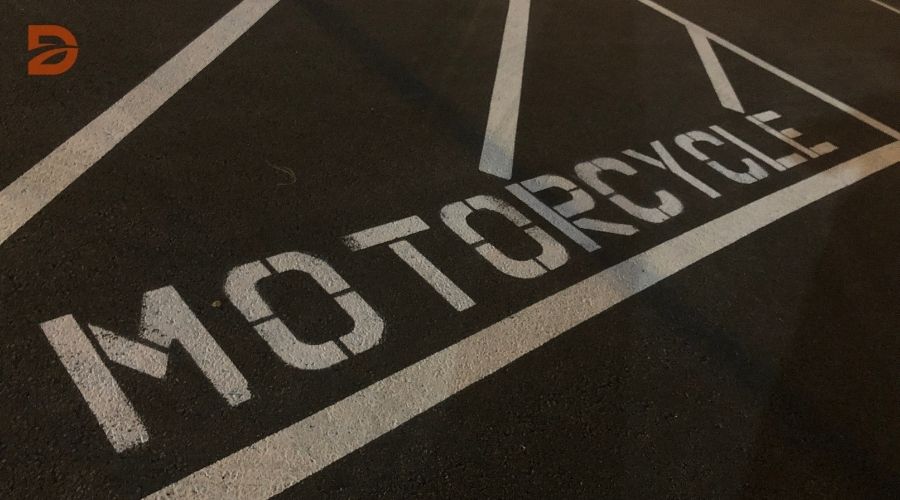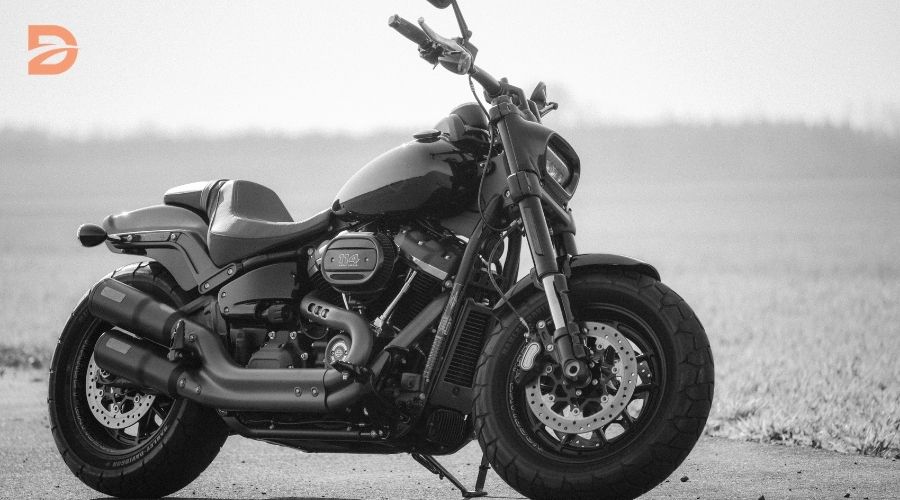There are more than 8 million registered motorcycles in the United States, and anyone who has felt the freedom of an open road on a bike understands the attraction. Motorcycles offer less protection to riders than passenger cars or larger vehicles, so it is important to ride the right bike for your needs. This article will explore the key signs that indicate it may be time to upgrade your motorcycle or replace some parts. The needs of a rider can change with experience, and evaluating your needs and preferences is crucial to ensure your bike still suits your situation.
Key Takeaways
- Upgrading power sports vehicles can enhance the riding experience, performance, and safety.
- Common signs it’s time to upgrade include decreased performance and efficiency, frequent breakdowns, outdated technology, changes in riding style or needs, and desire for improved looks and comfort.
- Evaluation of needs and budget is crucial before upgrading.
- Researching and choosing quality parts is important for successful upgrades.
- Regular maintenance is crucial to keep the upgraded vehicle in top condition.
Changing Riding Needs
As you gain experience and confidence on your motorcycle, your riding needs are likely to evolve. If you’ve mastered the fundamentals of steering, braking, and balancing, it may be time to consider upgrading to a larger bike that offers more power and performance. This could be particularly relevant if your riding has shifted from off-road adventures to long-distance touring, where features like increased fuel capacity and more luggage space become increasingly important.
Commuting to Long-Distance Touring
Your motorcycle usage can change over time, and with it, your needs. Riders who once primarily commuted to work may find themselves drawn to the thrill of long-distance touring, exploring new roads and destinations. This shift in riding style often necessitates an upgrade to a motorcycle better suited for extended journeys, such as one with a larger fuel tank, more comfortable seating, and increased storage capacity.
Upgrading your motorcycle can unlock a whole new world of riding experiences, allowing you to embark on longer, more adventurous trips without the limitations of your current bike. The signs to upgrade your motorcycle may be subtle, but paying attention to your evolving needs and preferences can help you make an informed decision when the time is right.
Safety Concerns and Modern Features
When it comes to upgrading your motorcycle, safety should be a top priority. If your older bike doesn’t have essential safety features like anti-lock brakes (ABS), it may be time to consider an upgrade. Statistics show that bikes equipped with ABS brakes are 37% less likely to be involved in a fatal crash, making this a crucial safety enhancement.
Motorcycle technology has advanced significantly in recent years, with many newer models offering features that can greatly improve your safety on the road. Some of these cutting-edge motorcycle tech features include traction control and stability control, which help maintain control in challenging conditions.
According to the National Highway Traffic Safety Administration (NHTSA), motorcyclists were about 22 times more likely than passenger vehicle occupants to die in a motor vehicle crash per vehicle mile traveled in 2022. This alarming statistic underscores the importance of prioritizing safety when upgrading your motorcycle.
“Motorcycle riders were 4 times more likely to be injured compared to passenger vehicle occupants per vehicle mile traveled in 2022.”
By investing in the latest motorcycle safety upgrades, you can significantly enhance your riding experience and reduce the risk of serious injury or fatality. Upgrading to a bike with advanced safety features is a smart and responsible reason to upgrade your motorcycle.
Signs to Upgrade Motorcycle
Are you a motorcycle enthusiast wondering when it’s the optimal time to upgrade your beloved ride? There are several key signs that indicate it may be time to consider a motorcycle upgrade. Whether it’s improving your riding experience, enhancing safety features, or simply satisfying your craving for a new adventure, understanding these signs can help you make an informed decision.
One of the primary signs that it’s time to upgrade is if your financial situation has improved, allowing you to invest in a higher-profile custom bike. Perhaps you’ve recently received a raise or bonus, or your disposable income has grown, making it possible to upgrade to a more powerful or feature-rich motorcycle.
Another sign to look for is if your current bike requires frequent and costly repairs. As motorcycles age, they can become more prone to mechanical issues, which can be both frustrating and financially draining. If you find yourself spending more time and money on maintenance than you’d like, it may be a sign that it’s time to consider a newer, more reliable model.
- Upgrading motorcycle fenders can have a significant impact on both the aesthetics and performance of the ride.
- Signs it’s time to upgrade fenders include wear and tear such as rust, dents, or scratches compromising integrity and performance.
- Upgrading to high-quality fenders can offer enhanced protection against road spray, mud, and debris.
- Adding high-end fenders can improve motorcycle aerodynamics and reduce drag, especially for tuned motorcycles.
- Upgrading fenders can provide a cohesive look to complement motorcycle style and modifications.
Finally, if you’re simply feeling bored with your current ride and craving a new experience, it may be a sign that an upgrade is in order. As our riding needs and preferences evolve, it’s natural to feel the desire for a motorcycle that better suits our changing requirements and desires.
| Statistic | Value |
|---|---|
| Registered motorcycles in the U.S. | More than 8 million |
| Bikes with ABS brakes less likely to be involved in fatal crashes | 37% less likely |
| Riders without helmets more likely to suffer brain damage or fatal head injury | 3 times as likely / 40% more likely |
| Helmet lifespan with proper care | About 5 years |
By being mindful of these signs, you can determine the optimal time to upgrade your motorcycle and ensure you’re riding a bike that truly aligns with your evolving needs and desires. Whether it’s a matter of financial capability, maintenance concerns, or a simple yearning for a new adventure, understanding the signs to upgrade can help you make an informed decision and enhance your riding experience.
Experience and Skill Level
As your motorcycle riding experience grows, you may find that your current bike no longer challenges you or fully meets your evolving needs. If you feel you’ve mastered your motorcycle’s capabilities and are ready to tackle more advanced riding techniques or terrain, upgrading to a bike with higher motorcycle performance capabilities could enhance your riding experience.
Mastering Your Current Bike’s Capabilities
Track day organizations typically categorize riders into three motorcycle skill level groups:
- Novice: Riders with little or no track experience.
- Intermediate: Riders with some track experience and basic riding knowledge.
- Advanced: Experienced riders with a high level of skill and track familiarity.
Before upgrading your motorcycle, consider the following upgrades to maximize your current bike’s capabilities for a track day:
- Upgraded brake pads and rotors for better stopping power.
- Stainless steel braided brake lines for improved brake feel.
- Quality riding gear, including a helmet, leather, and gloves, for safety.
When choosing a motorcycle for a track day, consider your riding style and the track’s demands. Thorough safety checks, suspension adjustments, and an understanding of track requirements are also essential for a successful track day experience.
It’s important to honestly evaluate your motorcycle skill level before participating in a track day. Enrolling in beginner-friendly events can provide valuable instruction and guidance, especially for novice riders.
Novices in the Washington Motorcycle Road Racing Association (WMRRA) are allowed to enter the sub-250, 250, 600, and 1000cc classes – as long as they race one bike per day.
By mastering your current bike’s capabilities, you can ensure a safe and enjoyable track day experience before considering when to upgrade your motorcycle.
Conclusion
As you consider upgrading your motorcycle, it’s crucial to carefully evaluate your changing riding needs, safety concerns, skill level, and the overall condition of your current bike. By conducting a thorough inspection, researching market prices, and taking a test ride, you can make an informed decision about the right time to upgrade.
Whether you’re seeking improved performance, enhanced safety features, or a more comfortable riding experience, upgrading to a new motorcycle can be a thrilling and rewarding journey. By staying informed and prioritizing your riding needs, you can find the perfect motorcycle that will take your adventures to new heights.
Remember, the decision to upgrade your motorcycle should be based on a holistic assessment of your evolving requirements, financial situation, and the overall condition of your current bike. With careful consideration and a clear understanding of the market, you can make a wise investment and embark on a new chapter of your riding experience.
FAQ
What are the key signs that indicate it may be time to upgrade my motorcycle?
Some key signs include if your riding needs have changed (e.g., from off-road to long-distance touring), if your current bike lacks important safety features like anti-lock brakes (ABS), if your financial situation has improved allowing you to invest in a higher-profile bike if your current motorcycle is requiring frequent and costly repairs, or if you simply feel bored with your current ride and are craving a new experience.
How can my changing riding needs indicate it’s time for an upgrade?
As your experience and preferences evolve, your motorcycle needs may change. For example, if you’ve mastered steering, braking, and balancing, and are looking for more power, it may be time to move on to a larger motorcycle option. Similarly, if your use has shifted from off-road riding to long-distance touring, upgrading to a bike with features like larger fuel storage capacity and more luggage space may better suit your new needs.
What safety concerns and modern features should I consider when upgrading my motorcycle?
Safety is a crucial factor when upgrading your motorcycle. If your older bike does not have anti-lock brakes (ABS), it may be time to upgrade, as statistics show that bikes with ABS brakes are 37% less likely to be involved in a fatal crash. Additionally, newer motorcycle models often offer advanced features like traction control and stability control, which can greatly improve safety on the road.
What other signs indicate it’s the right time to upgrade my motorcycle?
Other signs that it may be time to upgrade include if your current motorcycle is starting to feel outdated compared to the latest models with advanced technology, if your bike is requiring frequent and costly repairs, or if you simply feel you’ve outgrown the capabilities of your current ride and are ready for a new challenge.
How do my experience and skill level as a rider factor into the decision to upgrade my motorcycle?
As you gain more experience and confidence as a rider, you may find that your current motorcycle no longer challenges you or meets your evolving riding needs. If you feel like you’ve mastered your current bike’s capabilities and are ready to tackle more advanced riding techniques or terrain, upgrading to a motorcycle with higher performance or different handling characteristics could enhance your riding experience.











